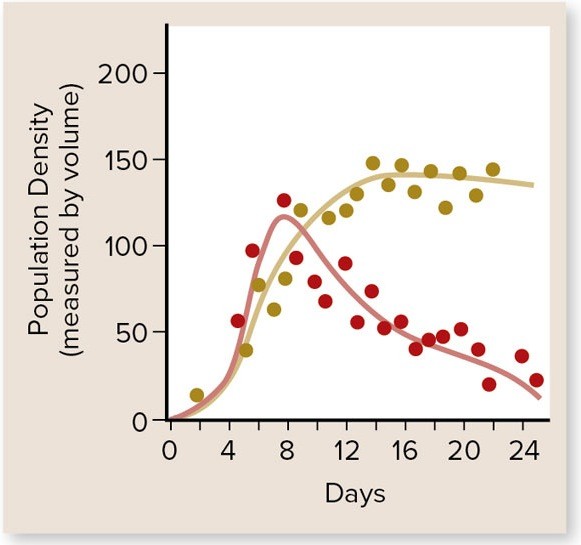Which statement correctly interprets the graph? (Note, Paramecium caudatum is in red and Paramecium aurelia is in mustard color.) 
A. Paramecium aurelia drives Paramecium caudatum to near extinction.
B. Paramecium caudatum drives Paramecium aurelia to near extinction.
C. Paramecium caudatum and Paramecium aurelia are unable to exist, and both populations go extinct after 24 days.
D. Paramecium caudatum and Paramecium aurelia are able to compete for the same resource, and their population densities are not affected.
Answer: B
You might also like to view...
The venom of black widow spiders (Latrodectus mactans) contains an enzyme that hydrolyzes lecithin to the phospholipid lysolecithin. The lysolecithin lyses red blood cells, destroying them. One possible mechanism whereby lysolecithin disrupts the plasma membranes of red blood cells is that it
A) is toxic to red blood cells. B) may act in a manner similar to detergents. C) binds calcium ions, compromising membrane integrity. D) acts as a second messenger to stimulate apoptosis. E) None of the above is a possible mechanism.
You discover a fungus that is associated with plant roots, with hyphae that actually penetrate the root
cells and produces tree-like structures within the root cells. Into which group should you classify this fungus?
a. Glomeromycota b. Basidiomycota c. Chytridiomycota d. Zygomycota e. Ascomycota
One or more neural effect(s) of MDMA include(s)
a. temporary psychosis. b. panic attacks. c. depletion of natural serotonin reserves. d. memory loss. e. all of these.
Which statement is true of water?
a. Water molecules attract hydrophobic substances. b. Water evaporates after absorbing small amounts of heat energy. c. Water’s hydrogen atom is slightly negative. d. Water molecules are polar. e. Water’s oxygen atom is slightly positive.